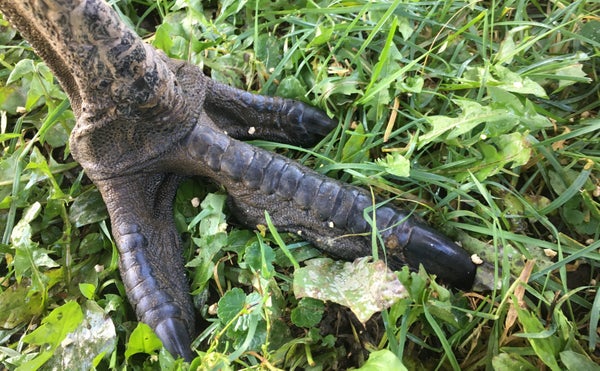This article was published in Scientific American’s former blog network and reflects the views of the author, not necessarily those of Scientific American
Birds are living dinosaurs. Studies drawn from hundreds of fossils, developmental details, and other anatomical evidence has made this fact abundantly clear. The pigeon on the sidewalk, the chicken on your plate, and the penguins waddling around Antarctica are all dinosaurs.
This cornerstone of the Dinosaur Renaissance has forever changed the way we understand dinosaurs. We now have living representatives of the terrible lizards to study, and this allows researchers to unlock biological secrets that were thought to be lost in the Mesozoic. But this isn’t to say that the dinosaurs of the ancient past were just like modern birds in every single respect. When we want to study how non-avian dinosaurs walked and ran, for example, some of their living relatives aren’t quite so helpful as we might think.
It’s easy to look at an ostrich or emu and see their dinosaurian ancestry. They look utterly prehistoric. In fact, these birds are partially copying the look of some non-avian dinosaurs called ornithomimosaurs – the ostrich mimic dinosaurs that ran around gobbling up lizards and bugs during the Cretaceous. Given their superficial similarity, then, it’d be tempting to think that rheas and their relatives might be able to unlock the secrets of how dinosaurs moved. Only, the bones don’t quite line up.
On supporting science journalism
If you're enjoying this article, consider supporting our award-winning journalism by subscribing. By purchasing a subscription you are helping to ensure the future of impactful stories about the discoveries and ideas shaping our world today.
Look at the skeleton of theropod dinosaurs like Allosaurus or Struthiomimus and the bird-like traits are easy to spot. It’s not hard to imagine these dinosaurs strutting along, bobbing their heads like enormous emus. But the proportions of their legs are different. Many non-avian theropods had long femora, or thigh bones, with the length of the lower leg bones determining how much reach the dinosaur could get with each stride. (Roughly, the longer the lower leg bones in relation to the femur, the speedier the dinosaur.) But living ratites have exceptional short femora that move very little while walking and running. Most of the leg you see as they stride around is made up of the lower limb bones.
These anatomical differences matter as we try to understand how non-avian theropods, from Tyrannosaurus to Velociraptor, moved around. Two different studies released just this year have underscored the point. While the results of a study of modern birds by P.J. Bishop and colleagues found that their results could be applied to the kinematics of non-avian theropods, the researchers cautioned that there are significant differences in how living dinosaurs and their extinct relatives in terms of their center of mass. After all, non-avian theropods had long, counterbalancing tails and living birds don’t, and that affects the biomechanics of dinosaur restorations.
Bruno Grossi and colleagues went even further, asking “Are cursorial birds good kinematic models of non-avian theropods?” Their answer, based upon comparisons of leg proportions, is “No.” Big cats and even hoofed mammals have leg proportions that more closely resemble those of non-avian theropods. Though only distantly related – mammals and dinosaurs last shared a common ancestor over 300 million years ago – perhaps some mammals might be better proxies for non-avian theropods than ostriches.
Of course, there are problems here, too. Felids and ungulates are quadrupeds with a different center of mass than theropods who walked on two legs. And as Bishop and coauthors found, living dinosaurs move at different speeds along a biomechanical continuum. They don’t seem to have well-defined walking and running gaits like mammals do, and it’s possible that non-avian dinosaurs were similar in this respect.
All of this underscores a fundamental truth that’s been reinforced over and over again as we’ve gotten to know our favorite dinosaurs better. That is, that they weren’t quite like anything alive today. We can learn a great deal from their closest relatives among the birds and crocodylians, and even from other vertebrates, but T. rex was not simply a 9-ton chicken and Ceratosaurus was not a toothed ostrich. We’re getting closer than ever before to understanding non-avian dinosaurs, but we still struggle to meet them on their own terms.
